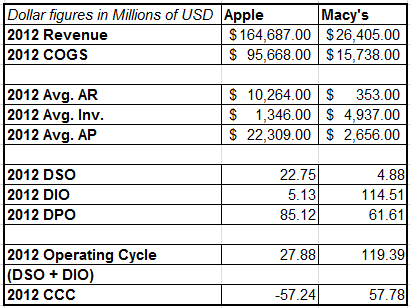Accounts Receivable = (Monthly Revenue / 30) x Days Sales Outstanding. So, for a given month, if it takes 30 days to collect receivables, Accounts Receivable equals monthly revenue. Days Sales outstanding = ( Average Receivables / Credit Sales ). 365. Days Sales outstanding = ( 120 / 700). 365 = 62.57. Hence, DSO = 62.57 days. What this indicates is that, For Company A it takes around 19 days to collect money from its customers. In the case of Company B, it takes as high as 63 days to collect money from its customers. DSO = $350,000 / ($1,000,00 / 180) DSO = 63. For 60-day terms, meaning their customers can take up to 60 days to pay, a DSO of 63 is not too shabby. As we've shown, there are many reasons why some customers may pay late. The closer the DSO calculation is to the terms that are set and the industry averages, the better. Days Sales Outstanding (DSO) is a measure of how efficiently and quickly a company converts credit sales into cash and how much of its credit sales are tied up unproductively as accounts receivable. The lower the number, the more efficient the company is, and the less of its cash remains tied up as accounts receivable. It is a simple calculation. DSO Calculator Download. The DSO calculator is available for download in Excel format by following the link below. The days sales outstanding figure calculated by this template can be used as one of the inputs for our Financial Projections Template, which provides the financial section for a business plan. Users use the days sales outstanding.
What is the Days Sales Outstanding Calculation?
Days sales outstanding (DSO) is the average number of days that receivables remain outstanding before they are collected. It is used to determine the effectiveness of a company's credit and collection efforts in allowing credit to customers, as well as its ability to collect from them. When measured at the individual customer level, it can indicate when a customer is having cash flow troubles, since the customer will attempt to stretch out the amount of time before it pays invoices. The measurement can be used internally to monitor the approximate amount of cash invested in receivables.
There is not an absolute number of days sales outstanding that represents excellent or poor accounts receivable management, since the figure varies considerably by industry and the underlying payment terms. Generally, a figure of 25% more than the standard terms allowed may represent an opportunity for improvement. Conversely, a days sales outstanding figure that is very close to the payment terms granted probably indicates that a company's credit policy is too tight.
The formula for days sales outstanding is:
(Accounts receivable ÷ Annual revenue) × Number of days in the year
Example of Days Sales Outstanding

As an example of the DSO calculation, if a company has an average accounts receivable balance of $200,000 and annual sales of $1,200,000, then its DSO figure is:
($200,000 Accounts receivable ÷ $1,200,000 Annual revenue) × 365 Days
= 60.8 Days sales outstanding
The calculation indicates that the company requires 60.8 days to collect a typical invoice.


How to Use Days Sales Outstanding
An effective way to use the days sales outstanding measurement is to track it on a trend line, month by month. Doing so shows any changes in the ability of the organization to collect from its customers. If a business is highly seasonal, a variation is to compare the measurement to the same metric for the same month in the preceding year; this provides a more reasonable basis for comparison.
No matter how this measurement is used, remember that it is usually compiled from a large number of outstanding invoices, and so provides no insights into the collectability of a specific invoice. Thus, it should be supplemented with an ongoing examination of the aged accounts receivable report and the collection notes of the collection staff.

As an example of the DSO calculation, if a company has an average accounts receivable balance of $200,000 and annual sales of $1,200,000, then its DSO figure is:
($200,000 Accounts receivable ÷ $1,200,000 Annual revenue) × 365 Days
= 60.8 Days sales outstanding
The calculation indicates that the company requires 60.8 days to collect a typical invoice.
How to Use Days Sales Outstanding
An effective way to use the days sales outstanding measurement is to track it on a trend line, month by month. Doing so shows any changes in the ability of the organization to collect from its customers. If a business is highly seasonal, a variation is to compare the measurement to the same metric for the same month in the preceding year; this provides a more reasonable basis for comparison.
No matter how this measurement is used, remember that it is usually compiled from a large number of outstanding invoices, and so provides no insights into the collectability of a specific invoice. Thus, it should be supplemented with an ongoing examination of the aged accounts receivable report and the collection notes of the collection staff.
DSO can be a useful measurement for an acquirer. It can look for businesses with unusually high DSO figures, with the intention of acquiring the firms and then improving their credit and collection activities. By doing so, they can strip some working capital out of the acquirees, thereby reducing the amount of the initial acquisition cost.
Related Courses
Dso Calculation Template Excel Template
Credit and Collection Guidebook
Effective Collections
The Interpretation of Financial Statements
